- Home
- Peter F. Hamilton
Pandora's Star Page 2
Pandora's Star Read online
Page 2
‘Good work, Wilson,’ Commander Lewis said. ‘Let’s bump struts, here, huh?’
‘You got it, sir.’
The landing rockets fired, and Eagle II began to sink smoothly out of the light pink sky. A hundred metres up, and Wilson couldn’t stand it. His fingers flicked four switches, taking the autopilot off line. Red LEDs glared accusingly at him from the console. He ignored them, bringing the little spaceplane down manually. Easier than any simulation. Dust swirled outside the windshield, thick and cloying as the rocket jets scoured the surface of Mars. Radar gave him the final approach vectors, there was nothing to see visually. They settled without a wobble. The sound of the rockets died away. External light began to brighten as the agitated dust flurries dissipated.
‘Houston, the Eagle II has landed,’ Wilson said. The words had to be forced out, his throat was so tensed up with pride and exhilaration. He could hear that beautiful phrase echo along history, past and future. And I made it happen, not some goddamn machine.
A wave of jubilant shouts and cheering broke out in the cabin behind him. He wiped an errant drop of moisture from his eye with the back of one hand. Then he was suddenly involved with systems supervision, re-engaging the autopilot. External instrumentation confirmed they were down and stable. The spaceplane had to be put into surface standby mode, supplying power and environmental services to the cabin, keeping the rocket engines warm so that take-off wouldn’t be a problem, monitoring the fuel tank status. A long, boring list of procedures that he worked through with flawless diligence.
Only then did the six of them begin to suit up. Given the cabin’s chronic lack of space, it was a cramped, difficult process, with everyone jostling each other. When Wilson was almost ready, Dylan Lewis handed him his helmet.
‘Thanks.’
The commander didn’t say anything, just gave Wilson a look. As reprimands went, it didn’t get much worse than that.
To hell with you, Wilson retorted silently. We’re the important thing, people coming to Mars is what matters, not the machines we come in. I couldn’t allow a software program to land us.
Wilson stood in line as the commander went into the small airlock at the back of the cabin. Third, I get to be third. Back on Earth they’d only ever remember that Dylan Lewis was first. Wilson didn’t care. Third.
The tiny display grid inside Wilson’s helmet relayed an image from the external camera set just above the airlock door. It showed a slim aluminium ladder stretching down to the Martian sand. Commander Lewis backed out of the open airlock, his foot moving slowly and carefully onto the top rung. Wilson wanted to shout, For God’s sake get a move on. The suit’s medical telemetry told him his skin was flushed and perspiring. He tried to do his deep feedback breathing exercise thing; but it didn’t seem to work.
Commander Lewis was taking the ladder rungs one at a time, pausing on each one, then he finally reached the last one. Wilson and the others in the cabin held their breaths; he could feel a couple of billion people doing the same thing back on the old home planet.
‘I take this step for all of humanity, so that we may walk together as one people along the road to the stars.’
Wilson winced at the words. Lewis sounded incredibly sincere. Then someone sniggered, actually sniggered out loud; he could hear it quite plainly over the general communication band. Mission Control would go ballistic over that.
Then he forgot it all as Lewis took his step onto the surface, his foot sinking slightly into the red sand of Mars to make a firm imprint.
‘We did it,’ Wilson whispered to himself. ‘We did it, we’re here.’ Another outbreak of cheering went round the cabin. Congratulatory calls flooded down from Ulysses. Jane Orchiston was already clambering into the airlock. Wilson didn’t even begrudge her that; political correctness wouldn’t allow it any other way. And NASA was ever mindful of pleasing as many people as possible.
Commander Lewis was busy taking a high-resolution photo of his historic footprint. A requirement that had been in the NASA manual for the last eighty-one years, ever since Apollo 11 got back home to find that embarrassing omission.
Lieutenant Commander Orchiston was going down the ladder – a lot faster than Commander Lewis. Wilson stepped into the airlock. He couldn’t even remember the time the little chamber took to cycle, it never existed in his personal awareness. Then it was him backing out onto the ladder. Him checking his feet were secure on the rungs before placing all his – reduced – weight on them. Him hanging poised on the bottom rung. ‘I wish you could see this, Dad.’ He put his foot down, and he was standing on Mars.
Wilson moved away from the ladder, cautious in the low gravity. Heart pounding away in his ears. Breathing loud in the helmet. Hiss of helmet air fans ever-present. Ghostly suit graphic symbols flickered annoyingly across his full field of vision. Other people talked directly into his ears. He stopped and turned full circle. Mars! Dirty rocks littering the ground. Sharp horizon. Small glaring sun. He searched round until he found the star that was Earth. Brought up a hand and waved solemnly at it.
‘Want to give me a hand with this?’ Commander Lewis asked. He was holding the flagpole, Stars and Stripes still furled tightly around the top.
‘Yes, sir.’
Jeff Silverman, the geophysicist, was already on the ladder. Wilson walked over to help the commander with the flagpole. He gave the Eagle II a critical assessment glance on his way. There were some scorch marks along the fuselage, trailing away from the wing roots, very faint, though. Other than that: nothing. It was in good shape.
The commander was attempting to open out the little tripod on the base of the flagpole. His heavy gloved hands making the operation difficult. Wilson put out his own hand to steady the pole.
‘Yo, dudes, how’s it hanging? You need any help there?’ The question was followed by a snigger.
Wilson knew the voice of everybody on the mission. Spend that long together with thirty-eight people in such a confined space as the Ulysses and vocal recognition became perfect. Whoever spoke wasn’t on the crew. Yet somehow he knew it was real-time, not some pirate hack from Earth.
Commander Lewis had frozen, the flagpole tripod still not fully deployed. ‘Who said that?’
‘That’d be me, my man. Nigel Sheldon, at your service. Specially if you need to get home in like a hurry.’ That snigger again. Then someone else saying, ‘Oh man, don’t do that, you’re going to so piss them off.’
‘Who is this?’ Lewis demanded.
Wilson was already moving, glide-walking as fast as was safe in the low gravity, making for the rear of the Eagle II. He knew they were close, and he could see everything on this side of the spaceplane. As soon as he was past the bell-shaped rocket nozzles he forced himself to a halt. Someone else was standing there, arm held high in an almost apologetic wave. Someone in what looked like a home-made space suit. Which was an insane interpretation, but it was definitely a pressure garment of some type, possibly modified from deep-sea gear. The outer fabric was made up from flat ridges of dull brown rubber, in pronounced contrast to Wilson’s snow-white ten-million-dollar Martian Environment Excursion suit. The helmet was the nineteen fifties classic goldfish bowl, a clear glass bubble showing the head of a young man with a scraggly beard and long oily blond hair tied back into a pigtail. No radiation protection, Wilson thought inanely. There was no backpack either, no portable life support module. Instead, a bundle of pressure hoses snaked away from the youth’s waist to a . . .
‘Son of a bitch,’ Wilson grunted.
Behind the interloper was a two-metre circle of another place. It hung above the Martian soil like some bizarre super-imposed TV image, with a weird rim made up from seething diffraction patterns of light from a grey universe. An opening through space, a gateway into what looked like a rundown physics lab. The other side had been sealed off with thick glass. A college geek-type with a wild afro hairstyle was pressed against it, looking out at Mars, laughing and pointing at Wilson. Above him, bright California
n sunlight shone in through the physics lab’s open windows.
1
The star vanished from the centre of the telescope’s image in less time than a single human heartbeat. There was no mistake, Dudley Bose was looking right at it when it happened. He blinked in surprise, drawing back from the eyepiece. ‘That’s not right,’ he muttered.
He shivered slightly in reaction to the cold air around him, slapping gloved hands against his arms. His wife, Wendy, had insisted he wrap up well against the night, and he’d dutifully left the house in a thick woollen coat and sturdy hiking trousers. But as always when the sun fell below Gralmond’s horizon, any warmth contained in the planet’s thinner-than-average atmosphere evaporated away almost immediately. With the telescope housing open to the elements at two o’clock in the morning, the temperature had dropped enough to turn his every breath into a streamer of grey mist.
Dudley shook the fatigue from his head, and leaned back in to the eyepiece. The star field pattern was the same, there had been no slippage in the telescope’s alignment, but Dyson Alpha was still missing. ‘It couldn’t be that fast,’ he said.
He’d been observing the Dyson Pair for fourteen months now, searching for the first clues of the envelopment which would so dramatically change the emission spectrum. So far there had been no change to the tiny yellow speck of light one thousand two hundred and forty light-years away from Gralmond which was Dyson Alpha.
He’d known there would be a change; it was the astronomy department at Oxford University back on Earth that had first noticed the anomaly during a routine sky scan back in 2170, two hundred and ten years ago. Since the previous scan twenty years earlier, two stars, a K-type and an M-type three light-years apart, had changed their emission spectrum completely to non-visible infra red. For a few brief months the discovery had caused some excited debate among the remnants of the astronomy fraternity about how they could decay into red giants so quickly, and the extraordinary coincidence of two stellar neighbours doing it simultaneously. Then a newly settled planet fifty light-years farther out from Earth reported that the pair were still visible in their original spectrum. Working back across the distance, checking the spectrum at various distances from Earth allowed astronomers to work out that the change to both stars had actually taken place over a period of approximately seven or eight years and was simultaneous. Given that speed, the nature of the change ceased to become a question of astronomy; stars of that nature took a great deal longer to transform themselves into red giants. Their emission hadn’t changed due to any natural stellar process; it was the direct result of technological intervention on the grandest possible scale. Somebody had built a solid shell around each star. It was a feat whose scale was rivalled only by its timeframe. Eight years was astonishingly swift to fabricate such a gigantic structure even for a super-advanced civilization, and they’d built two at the same time. Even so, the concept wasn’t entirely new to the human race.
In the twenty-first century, a physicist called Freeman Dyson had postulated that the artefacts of a technologically advanced civilization would ultimately surround their star in order to utilize all of its energy. Now someone else had turned his ancient hypothesis into reality. It was inevitable that the two stars would be formally christened the Dyson Pair.
Speculative papers were written, and theoretical studies performed into how to dismantle Jovian-size planets to produce such a shell. But even in the modern Intersolar Commonwealth, those were a minority interest, a debating topic for the more esoteric futurologists. There was no real urgency connected to the discovery. The human race had already encountered several sentient alien species, all of them reassuringly harmless; and the Commonwealth was expanding steadily. It would only be a matter of a few centuries until a wormhole was opened to the Dyson Pair. Any lingering questions about their construction could be answered then by the aliens themselves.
Now he’d seen the envelopment was instantaneous, Dudley was left with a whole new set of very uncomfortable questions about the composition of the shell structure. Before, it was assumed that an eight-year construction period for any solid shell that size was utterly remarkable, but obviously achievable. When he’d begun the observation he’d expected to note a year by year eclipse of the star’s light as more and more segments were produced and locked into place. This changed everything. To appear so abruptly, the shell couldn’t be solid. It had to be some kind of force field. Why would you surround a star with a force field?
‘Are we recording?’ he asked his e-butler.
‘We are not,’ the e-butler replied. ‘No electronic sensors are currently active at the telescope focus.’ The voice was slightly thin, treble boosted; a tone which had been getting worse over the last few years. Dudley suspected the OCtattoo on his ear was starting to degenerate; organic circuitry was always susceptible to antibody attack, and his was over twenty-five years old. Not that the outer glittery scarlet and turquoise spiral pattern on his skin had changed. A classic spree of youthful dynamism after his last rejuvenation had made him choose a visible print, stylish and chic in those days. Now it was merely embarrassing for a middle-aged professor to be sporting it around the campus. He should have had the old pattern erased and replaced it with something more discreet; but somehow he’d never got around to it, despite his wife’s repeated requests.
‘Damn it,’ Dudley grunted bitterly. But then the idea of his e-butler taking the initiative had been a pretty forlorn hope. Dyson Alpha had only risen forty minutes earlier. Dudley had been setting up the observation, performing his standard final verification. An essential task thanks to the poorly maintained mechanical systems which orientated the telescope. He never ordered the sensor activation until the checks were complete. That prissy routine might just have cost him the entire observation project.
Dudley went back for yet another look. The little star was still stubbornly absent in the visual spectrum. ‘Bring the sensors on line now, will you, please. I need to have some sort of record of tonight.’
‘Recording now,’ his e-butler said. ‘The sensors could benefit from recalibrating, the entire image is considerably short of optimum.’
‘Yeah, I’ll get on to it,’ Dudley replied absently. The state of the sensors was a hardware problem; one which he ought to assign to his students (all three of them). Along with a hundred other tasks, he thought wearily.
He pushed back from the telescope, and used his feet to propel the black leather office chair across the bare concrete floor of the observatory. The rattling noise from its old castors echoed thinly around the cavernous interior. There was enough vacant space for a host of sophisticated ancillary systems, which could bring the observatory up to near-professional standards; it could even house a larger telescope. But Gralmond University lacked the funds for such an upgrade, and had so far failed to secure any commercial sponsorship from Compression Space Transport, the only company truly interested in such matters. To date the astronomy department survived on a collection of meagre government grants, and a few endowments from purescience foundations, even an Earth-based educational charity made an annual donation.
Beside the door was the long wooden bench which served as de facto office for the whole department. It was covered with banks of ageing, second-hand electronic equipment and high-rez display portals. Dudley’s brown leather briefcase was also there, containing his late-night snacks and a flask of tea.
He opened the case and started munching on a chocolate digestive as the sensor images swam up into the display portals. ‘Put the infrared on the primary display,’ he told the e-butler.
Holographic speckles in the large main portal shoaled into a false colour image of the star field, centred around the Dyson Pair. Dyson Alpha was now emitting a faint infrared signature.
‘So that really was the envelopment event,’ Dudley mused. At least people would have to acknowledge that it happened in under twenty-three hours – the time since the last recorded observation. It was a start, but a bad one. A
fter all, he’d just witnessed something utterly astounding. But now his only thanks were likely to be disbelief, and a mountainous struggle to maintain his already none-too-high reputation.
Dudley was ninety-two, in his second life, and fast approaching time for another rejuvenation. Despite his body having the physical age of a standard fifty-year-old, the prospect of a long degrading campaign within academia was one he regarded with dread. For a supposedly advanced civilization, the Intersolar Commonwealth could be appallingly backward at times, not to mention cruel.
Maybe it won’t be that bad, he told himself. The lie was comforting enough to get him through the rest of the night’s shift.
*
The Carlton AllLander drove Dudley home just after dawn. Like the astronomer, the vehicle was old and worn, but perfectly capable of doing its job. It had a cheap diesel engine, common enough on a semi-frontier world like Gralmond, although its drive array was a thoroughly modern photoneural processor. With its high suspension and deep-tread tyres it could plough along the dirt track to the observatory in all weather and seasons, including the metre-deep snow of Gral-mond’s winters.
This morning all it had to surmount was a light drizzle and a thin slick of mud on the track. The observatory was situated on the high moorland ninety kilometres to the east of Leonida City, the planet’s capital. Not exactly a mountaintop perch, but it was the highest land within any reasonable distance, and unlikely ever to suffer from light pollution. It was forty minutes before the Carlton started to wind its way down into the lower valleys where the main highway meandered along the base of the slopes. Only then were there any signs of human activity. A few farmsteads had been built in sheltered folds of the land where dense stretches of dark native evergreen cynomel trees occupied the ground above every stream and river. Grazing meadows had been established on the bleak hillsides, where animals shivered in the cold winds blowing down off the moorland.

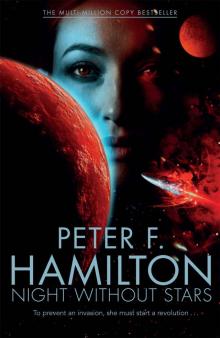 A Night Without Stars
A Night Without Stars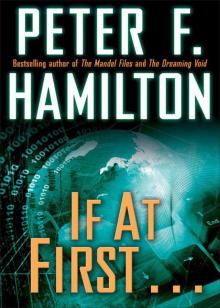 If at First . . .
If at First . . .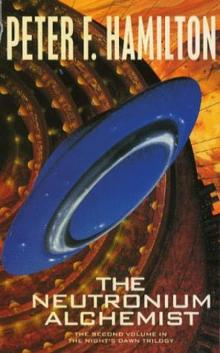 The Neutronium Alchemist
The Neutronium Alchemist Great North Road
Great North Road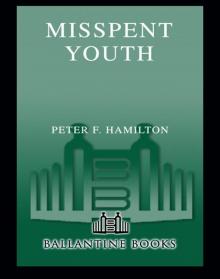 Misspent Youth
Misspent Youth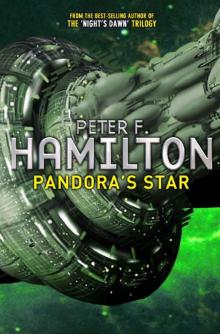 Pandora's Star
Pandora's Star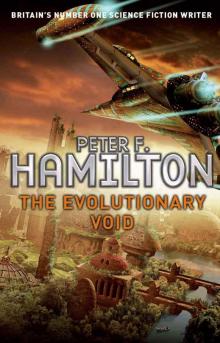 The Evolutionary Void
The Evolutionary Void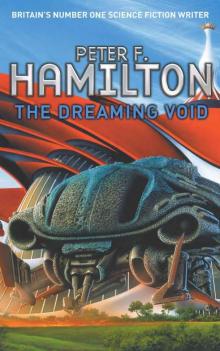 The Dreaming Void
The Dreaming Void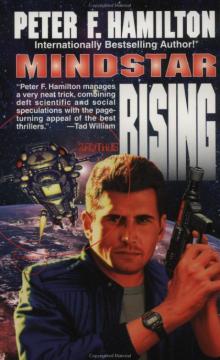 Mindstar Rising
Mindstar Rising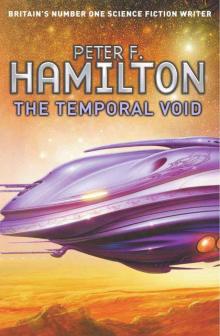 The Temporal Void
The Temporal Void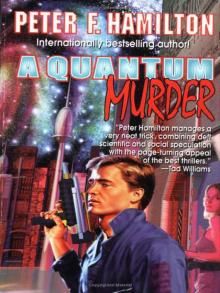 A Quantum Murder
A Quantum Murder The Hunting of the Princes
The Hunting of the Princes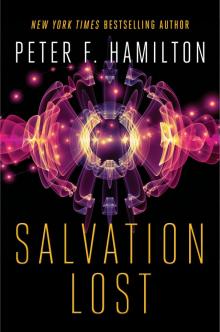 Salvation Lost
Salvation Lost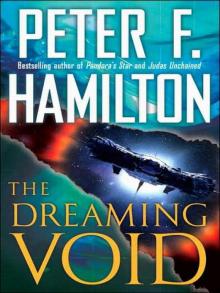 The Dreaming
The Dreaming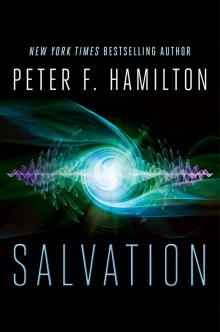 Salvation
Salvation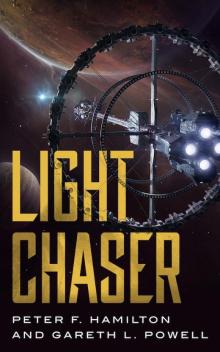 Light Chaser
Light Chaser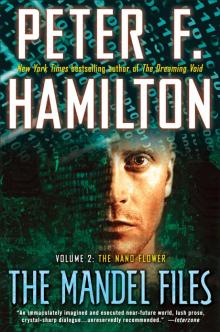 The Mandel Files, Volume 2: The Nano Flower
The Mandel Files, Volume 2: The Nano Flower![The Saints of Salvation [British Ed.] Read online](http://i1.bookreadfree.com/22/the_saints_of_salvation_british_ed__preview.jpg) The Saints of Salvation [British Ed.]
The Saints of Salvation [British Ed.]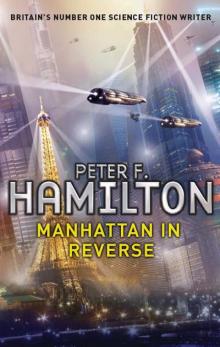 Manhattan in Reverse
Manhattan in Reverse The Secret Throne
The Secret Throne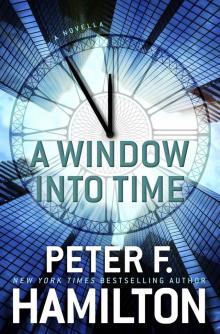 A Window Into Time
A Window Into Time A Second Chance at Eden
A Second Chance at Eden The Nano Flower
The Nano Flower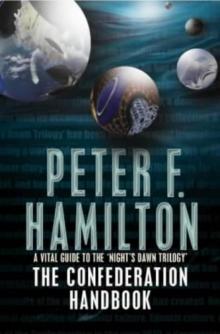 The Confederation Handbook
The Confederation Handbook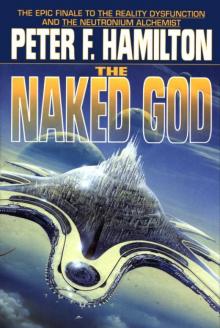 The Naked God
The Naked God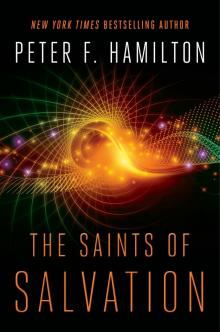 The Saints of Salvation
The Saints of Salvation The Void Trilogy 3-Book Bundle
The Void Trilogy 3-Book Bundle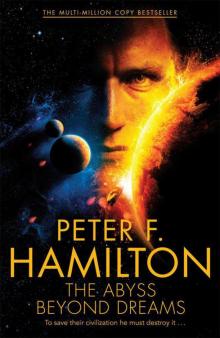 The Abyss Beyond Dreams
The Abyss Beyond Dreams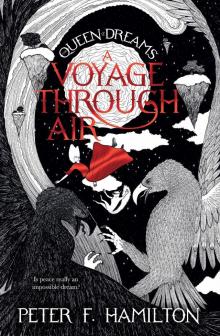 A Voyage Through Air
A Voyage Through Air Judas Unchained
Judas Unchained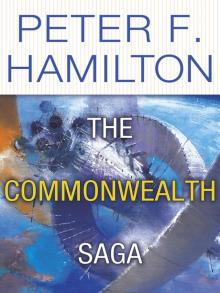 The Commonwealth Saga 2-Book Bundle
The Commonwealth Saga 2-Book Bundle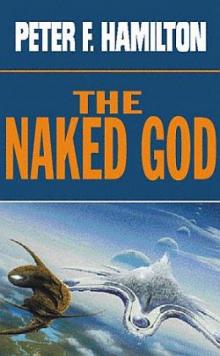 The Naked God - Flight nd-5
The Naked God - Flight nd-5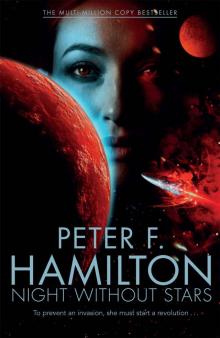 Night Without Stars (Chronicle of the Fallers Book 2)
Night Without Stars (Chronicle of the Fallers Book 2)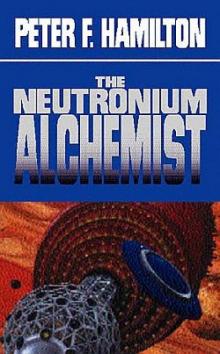 Neutronium Alchemist - Conflict nd-4
Neutronium Alchemist - Conflict nd-4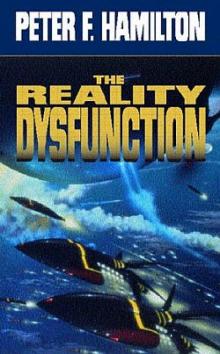 Reality Dysfunction - Expansion nd-2
Reality Dysfunction - Expansion nd-2 Now We Are Ten: Celebrating the First Ten Years of NewCon Press
Now We Are Ten: Celebrating the First Ten Years of NewCon Press Neutronium Alchemist - Consolidation nd-3
Neutronium Alchemist - Consolidation nd-3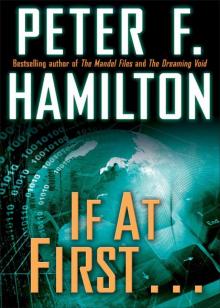 If at First . . . (Short Story)
If at First . . . (Short Story)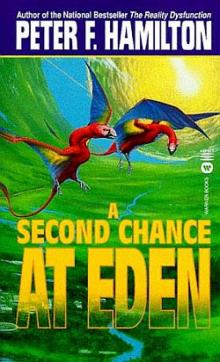 A Second Chance at Eden nd-7
A Second Chance at Eden nd-7 Judas Unchained cs-2
Judas Unchained cs-2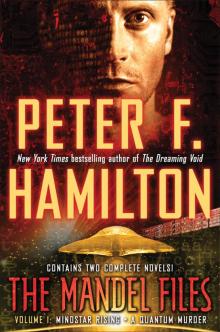 The Mandel Files, Volume 1
The Mandel Files, Volume 1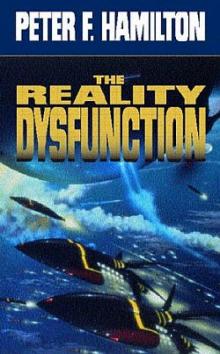 Reality Dysfunction — Emergence nd-1
Reality Dysfunction — Emergence nd-1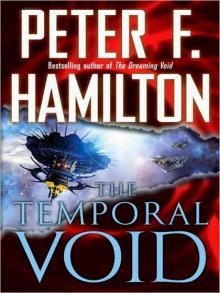 The Temporal Void (ARC)
The Temporal Void (ARC) The Mandel Files
The Mandel Files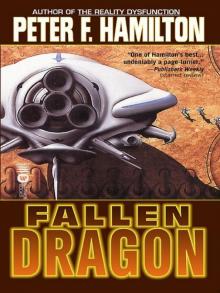 Fallen Fragon
Fallen Fragon Misspent Youth (commonwealth saga)
Misspent Youth (commonwealth saga)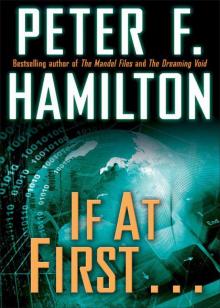 If at First...
If at First... Best of British Science Fiction 2016
Best of British Science Fiction 2016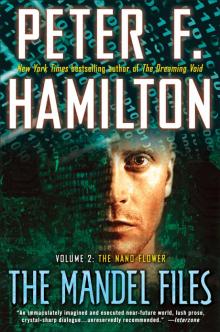 The Mandel Files, Volume 2
The Mandel Files, Volume 2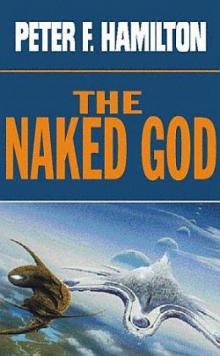 The Naked God - Faith nd-6
The Naked God - Faith nd-6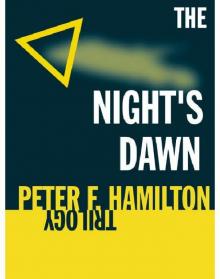 The Night's Dawn Trilogy
The Night's Dawn Trilogy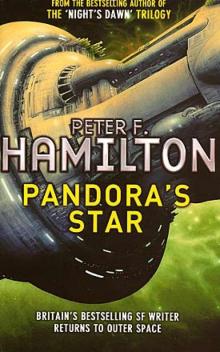 Pandora's Star cs-2
Pandora's Star cs-2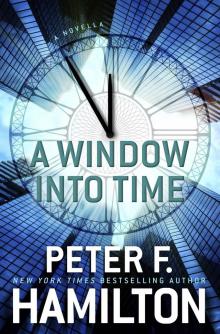 A Window into Time (Novella)
A Window into Time (Novella)